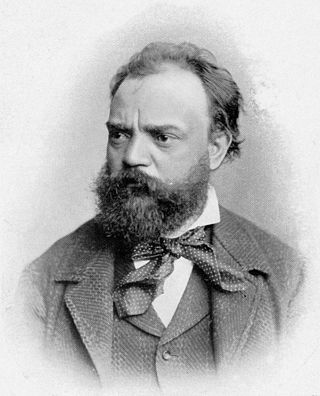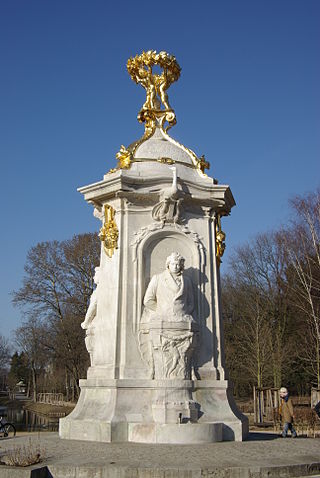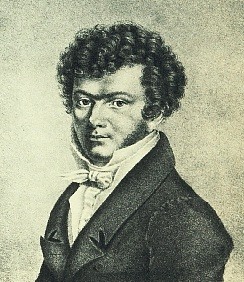
Ludwig van Beethoven was a German composer and pianist. He is one of the most revered figures in the history of Western music; his works rank among the most performed of the classical music repertoire and span the transition from the Classical period to the Romantic era in classical music. His early period, during which he forged his craft, is typically considered to have lasted until 1802. From 1802 to around 1812, his middle period showed an individual development from the styles of Joseph Haydn and Wolfgang Amadeus Mozart, and is sometimes characterized as heroic. During this time, Beethoven began to grow increasingly deaf. In his late period, from 1812 to 1827, he extended his innovations in musical form and expression.

Antonín Dvořák composed his Symphony No. 6 in D major, Op. 60, B. 112, in 1880. It was premiered on 25 March 1881. It was originally published as Symphony No. 1 and is dedicated to Hans Richter, who was the conductor of the Vienna Philharmonic Orchestra. With a performance time of approximately 40 minutes, the four-movement piece was one of the first of Dvořák’s large symphonic works to draw international attention. In it, he manages to capture some of the Czech national style within a standard Germanic classical-romantic form.

The Symphony No. 2 in D major, Op. 36, is a symphony in four movements written by Ludwig van Beethoven between 1801 and 1802. The work is dedicated to Karl Alois, Prince Lichnowsky.

Joseph Kaspar Mertz was a guitarist and composer from the Austrian Empire.

AntonJoseph Reicha (Rejcha) was a Czech-born, Bavarian-educated, later naturalized French composer and music theorist. A contemporary and lifelong friend of Beethoven, he is now best remembered for his substantial early contributions to the wind quintet literature and his role as teacher of pupils including Franz Liszt, Hector Berlioz and César Franck. He was also an accomplished theorist, and wrote several treatises on various aspects of composition. Some of his theoretical work dealt with experimental methods of composition, which he applied in a variety of works such as fugues and études for piano and string quartet.

Ferdinand Ries was a German composer. Ries was a friend, pupil and secretary of Ludwig van Beethoven. He composed eight symphonies, a violin concerto, nine piano concertos, three operas, and numerous other works, including 26 string quartets. In 1838 he published a collection of reminiscences of his teacher Beethoven, co-written with Beethoven's friend, Franz Wegeler. Ries' symphonies, some chamber works—most of them with piano—his violin concerto and his piano concertos have been recorded, exhibiting a style which, given his connection to Beethoven, lies between the Classical and early Romantic styles.

Ferdinand (von) Hiller was a German composer, conductor, pianist, writer and music director.

During the course of his lifetime, Ludwig van Beethoven (1770–1827) established relationships with many of his musical contemporaries. Beethoven was notoriously temperamental, eccentric and difficult to get along with; the history of his many relationships is replete with arguments, misunderstandings, and reconciliations. Beethoven had well-known quarrels with his one-time teachers, Joseph Haydn and Antonio Salieri, with the piano virtuoso and composer Johann Nepomuk Hummel, and the German composer Carl Maria von Weber. Conversely, he regarded Franz Schubert positively, praising the latter's compositions.

The Symphony No. 3 in E♭ major, Op. 10, B. 34, is a classical composition by Antonín Dvořák.
Kaspar Anton Karl van Beethoven was a brother of the composer Ludwig van Beethoven.

Richard Franz Stöhr was an Austrian composer, music author and teacher.
While a concerto is generally a piece for an instrument or instruments with orchestral accompaniment, some works for piano alone have been written with the seemingly contradictory designation concerto for solo piano.
Ferdinand Ries composed the Symphony No. 5 in D minor, Op. 112, in London in 1813. It was the second symphony Ries wrote. It was first performed at a Philharmonic Society concert on 14 February 1814. In 1823, Breitkopf & Härtel published the work together with piano solo, piano duet and chamber arrangements.
From March 1816 to August 1817, Franz Schubert composed four violin sonatas. All four were published after the composer's death: the first three, D 384, 385 and 408, as Sonatinas in 1836, and the last one, D 574, as Duo in 1851. Schubert composed two more pieces for violin and piano, in October 1826 and December 1827 respectively: a Rondo, D 895, which was published during the composer's lifetime (Op. 70), and a Fantasy, D 934, which was premiered in January 1828, less than a year before the composer's death.

The Piano Concerto No. 6 in C major, Op. 123, by Ferdinand Ries was composed around 1806. Composed in a proto-Romantic style, similar to the concertos of Johann Nepomuk Hummel, it also shows evidence of the influence of Beethoven's C minor Piano Concerto, Op. 37 which Ries had performed at his public debut in 1804.
The Trio for Piano, Clarinet and Cello in B-flat major, Op. 28, was composed by Ferdinand Ries in either Bonn in 1809 or Aachen in 1810 during the period he left Vienna to avoid being drafted into the Austrian army. It was published in 1811 by Simrock with a dedication to a Mademoiselle Clairette Ludwigs.

Ferdinand Ries composed his Clarinet Sonata in G minor, Op. 29, in Bonn in 1809 according to his thematic catalog, but it was not published until 1812 by Simrock without a dedication. Its composition history is unclear but it may have been written with a particular clarinetist in mind. The work has sometimes been transcribed for violin.
The Piano Concerto No. 5 in D major, Op. 120 "Concerto Pastorale", by Ferdinand Ries was composed between 1813 and 1816 and published in 1823 by the firm of Sauer & Leidesdorf with a dedication to Prince Oscar of Sweden.
The Piano Concerto No. 4 in C minor, Op. 115 by Ferdinand Ries was composed in Bonn in 1809 but was not published until 1823 when it was released by both H.A. Probst of Leipzig and Birchall & Cº of London with a dedication to Ignaz Moscheles.
Ferdinand Ries's Violin Sonata in F minor, Op. 19, was published in 1810 by Simrock with a dedication to two friends, Franz Christian Kirchhoffer and composer Ludwig Wilhelm Maurer. As with all of the composers published violin sonatas the work is, like many of the composers flute sonatas, for piano with the second instrument, in this case the violin providing accompaniment.









